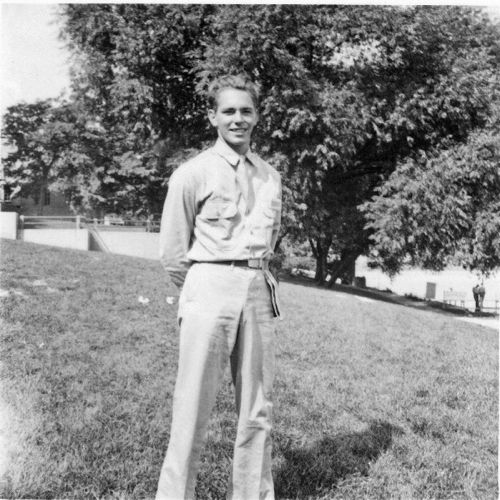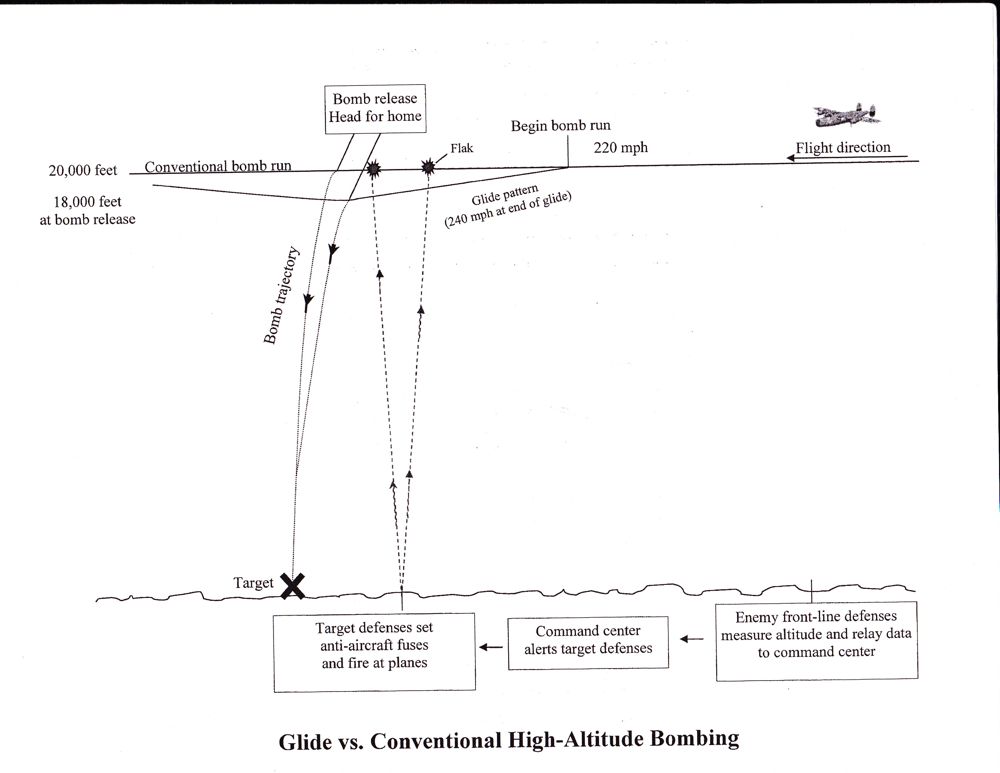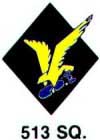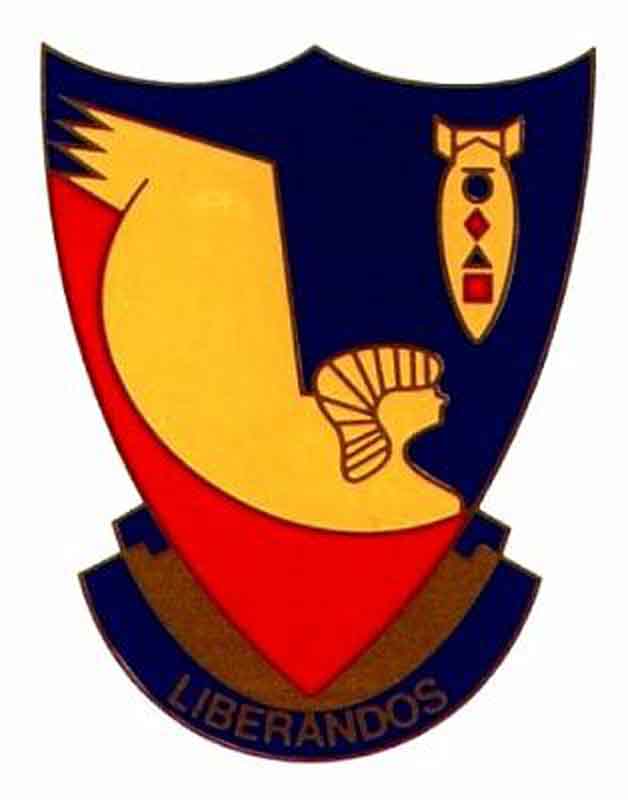Edward W. Biro

Edward W. Biro was a radar mechanic with the 513th Squadron.
Remembering the Radar Gang, 1944-45: Innovations that Saved Lives
By Edward W. Biro, radar mechanic, 513th Squadron, and daughter Diana Biro.
Many of the paper records of the 376th Bomb Group were destroyed in 1945 when a cargo net containing them fell into the Bay of Taranto during the loading operation. Our research has found very little in the published literature or on the web about the use and development of high-altitude radar during WW II. So we are pleased to relate my personal experiences with innovative radar strategies at the 376th—technical achievements that we believe contributed significantly to the war effort and saved American lives.
Radar = Radio detecting and ranging: a device or system that emits radio waves and processes their reflection for display, used especially for detecting and locating objects or surface features.
Background: Ramping Up the Radar Operation
The Radar Camera
Radar/Bombsight Coordination
Glide Bombing
Postscript
Background: Ramping Up the Radar Operation
In April 1944, after a year of intensive training in radio electronics and then radar by the Technical Training Command stateside, I arrived at the 376th air base in Italy. The army had paired me with one of my radar classmates, Robert Darby, and we were assigned to this field just outside the small village of San Pancrazio, in the ‘heel’ of the Italian ‘boot.’ Our mission was high-altitude bombardment (HAB) with B-24 (Liberator) airplanes. High-altitude radar was relatively new in the European theater, and at the time only a small percentage of our B-24s had this radar. Though those planes were stationed at various bases, they all had their radar equipment serviced at the 376th, which was then the central base for maintaining aircraft radar. HAB radar had yet to prove itself in the field. In early 1944, radar sets had a very low reliability record: barely 5% of them would operate for an entire bombing flight.
Darby and I were assigned a tent and a few days later met the radar gang, including radar C. O. Lt. Davis Cooper (later promoted to captain), first sergeant Stanley Allaback, and shop technician Carl Schimmelman. The operation itself was pretty simple. The ‘line men’ would go out to those planes that had radar and test-run the radar set through a prescribed procedure. Any malfunctioning unit was brought to the radar shack, where the more experienced shop technicians would perform the repair. The radar shack was also used by the radar navigators as a classroom to discuss problems and operation with the radar technicians and to familiarize the newly arrived navigators with our procedures. I worked up to shop (radar) technician rather quickly, since the need was great and there were few qualified personnel. Other radar mechanics joined our group during 1944. I particularly remember Earl Watson, who worked with me on the same shift and became a personal friend. Many radar guys who reported to the 376th were later reassigned to other fields, since the use of radar technology was growing and the air force was expanding its servicing system.
The ‘shack’ was a stone building in the middle of the field, a few hundred feet from the runway. A security group occupied the first level, and the second, much smaller level housed the radar shack proper. It had a few benches, oscilloscopes, multi-meters and hand tools. The power (28-volt DC) for testing the radar sets came from one of three wagon-mounted gas-driven generators (called Waukeshaws after their manufacturer) on the ground with a long extension up to the window and into the shop. The generators were also used by the line men to supply power to the plane while doing the test runs. Since we had only three of them, we had to share as needed: to power up the aircraft and repair the radar sets in the shack. We also had a small gas-driven generator (110 volts) for the lights and general power. With this sparse equipment we all went to work.
Neither Lt. Cooper nor the radar mechanics were satisfied with this primitive set-up, however, so we quickly began making changes to improve our procedures. Additional benches were built and a more efficient bench repair and test operation was implemented. The radar antenna was installed on the roof for greater coverage. A room was set up to organize and store all our spare parts and components. Separate areas were designated for the repaired (green tag) units and the ‘to be repaired’ (red tag) units; the red tags had to explain the problem the line man had found, and he was required to sign the tag. The green tag was signed by the shop man who repaired the unit. A log was kept for all red- and green-tagged units. We also ‘obtained’ two dedicated 28-volt gas-driven generators, releasing the ‘Waukeshaw’ for line use.
The radar group was also unhappy with the low reliability of operational radar equipment in B-24 airplanes. We all wanted to do much, much better to support the navigators and crews on their bombing missions. So both as a group and individually, we examined problems, weaknesses, and areas of failure, then did what we could to bolster radar performance. An early problem, for example, was fuses blowing during flight, which would disable the radar. Reaching the fuse block in its original position to change a fuse was impossible for the crew in flight, so we relocated the block to make it accessible for the navigators, who could then replace fuses as needed.
By the time we left Italy in April 1945, our radar team’s record for radar sets operating reliably during entire flight missions had climbed to about 95%, and radar had proved itself a valuable technical tool for carrying out successful high-altitude bombing missions.
The next three sections describe specific innovations that emerged out of collaborative discussions between the radar technicians and navigators of the 376th, who got together for joint problem-solving as they became familiar with one another’s concerns. The radar team (techs and navigators) then implemented these techniques with some assistance from other members of the bomb group. The time frames represent my best recall and may need some adjustment; the technical details and the order of these strategic developments are accurate accounts of what transpired.
The Radar Camera
Developed in June/July 1944
Before the summer of 1944, the training sessions for new navigators consisted mainly of the physical procedures. We radar techs would outline the several different switches and the order and timing of their use, as well as where the fuses were and how to change them. But we could not show the trainees actual radar screen images of ground scans from the air. That was a problem to be addressed: the experienced navigators wanted examples of actual radar screen images. The radar image on the screen was similar to a map in relief of the terrain below and it took some practice to learn how to interpret it.
To get real radar images for navigator training, an American civilian whom Lt. Cooper introduced to us came up with the concept of using a camera to take “radar pictures.” He provided a standard Kodak reconnaissance camera body (no lens—just the focal plane shutter and the film transport section), and after discussing the requirements with others, I designed the mechanical aspects and electrical wiring needed to integrate the camera with the radar set. Next, I fabricated an adapter and mounted it on the radar remote scope. Then I used a signal from the radar set to trigger the camera so it would take sequential pictures at approximately 1- or 5-minute intervals. The resulting photos gave a radar record of the flight, and the experienced navigators used them in the training sessions as actual images, which they explained how to interpret. I secured more material and built about a dozen of these camera adapters. As we used and refined this technique, our radar navigators photographed many bomb runs and the radar images of many targets.
One evening in August 1944 we were very busy checking out the radar equipment. The orders were that every available plane was to be ready for flight early the next morning. It was obvious that something out of the ordinary was happening. The flight crews were starting the engines as the last radar plane was checked out at about 3:00 a.m. We buttoned up things at the shop and retired to our squadron areas, had breakfast, and went to bed as the planes were taking off.
We awoke about noon and after lunch the planes returned. It was then that we learned of the invasion of southern France. The films from the radar cameras were rushed to field photo as the flight crews were abuzz with their stories of the invasion. When we got the radar pictures, we could see the coastline of southern France and the many ships in the Golfe du Lion, off the Mediterranean Sea. This major assault was certainly a turning point in the war.
The radar photos were very clear, though in ‘relief,’ and the navigators came up with another plan. Why not photograph all of Europe for a full radar map? So the aircraft mechanics altered one B-24 by removing all the armament, then painted it black and put flash-hiding baffles on the turbo superchargers. The navigators mapped out a flight plan grid and the ‘Black Beauty’ took off every night with a radar navigator aboard. Over a period of about a week, we had all of Europe on film. The photo shop put all the pictures together in a montage, and we then had an excellent piece of training material.
Radar/Bombsight Coordination
Developed in September 1944
One day a few navigators were discussing a scrubbed (canceled) bomb run. The crews had been briefed and the planes had taken off early that morning as scheduled. But as they approached enemy territory, the target area was obscured by clouds and the bombardier could not set up the bombsight so the mission had to be scrubbed. Everyone was disappointed: they counted missions—35 missions and they rotated back to the States—and scrubs didn’t count.
The navigators started brainstorming to resolve the problem. They had noticed that, since the radar sets were not affected by the clouds, they could see the target area clearly. Located on the flight deck, the navigators had all the necessary data (angle of declination, azimuth, etc.), and they wondered how they could get that data to the bombardier in the nose of the plane. After some discussion they devised a simple method by using the plane’s intercom. The navigator would talk to the bombardier, who would set up the bombsight accordingly. They prepared a few mock runs on ‘targets’ to our south (Allied controlled), and the bombardier left the lens cap on the bombsight telescope so he could not see the target. At the start of the bomb run, the radar navigator gave the bombardier the initial information to set up the bombsight. Subsequent checkpoints were relayed and corrections made to the bombsight as needed. As the plane approached the ‘target,’ the bombardier removed the lens cap, and as he peered into the telescope, he was dead on.
After a few more trials, the idea of using radar data to set up the bombsight was presented to operations officers and was approved. Since the enemy knew we wouldn’t bomb haphazardly—that is, we wouldn’t bomb on cloudy days—there would be no alert to scramble the enemy’s anti-aircraft forces, thus reducing the risk to our men.
Colonel Graff, the Commanding Officer of the 376th Bomb Group at the time, flew the lead radar plane on one of the early missions on a cloudy day. He later reported (as I heard second-hand): “The clouds were so thick we couldn’t see the ground below. The strangest thing was we were supposedly over the target area, and we had no flak. Then the bombardier called out over the intercom: ‘Bomb’s away, let’s go home!’ It was hard to believe we’d completed the bomb run without encountering any enemy fire.”
The next day the photos from the reconnaissance planes showed a direct hit on the target. This innovation certainly gave us an advantage and would shorten the war.
Glide Bombing
Developed in late 1944
On another occasion, the discussion among the radar techs and navigators focused on what could be done to avoid enemy flak. We had lost many planes and crew to enemy fire, which was quite accurate. We had chaff (a tinsel-like material that reflected radar waves) that was thrown out of the planes in an attempt to confuse enemy radar, but apparently the German anti-aircraft defenses compensated correctly. One of our radar navigators, Lt. Hill, presented a novel idea. Whether he came up with this concept himself or heard about it elsewhere I don’t know, but our radar group developed and implemented this strategy for our later bomb runs.
The conventional bomb run would start at a given altitude and maintain that altitude to the target area. The problem was that the enemy’s front-line defenses would track our planes and radio back to an Axis command center the altitude, direction, number and type of planes along with the time. That information enabled the enemy to plot our flight path and alert the perimeter (target area) defenses in time for them to set the anti-aircraft fuses to the correct altitude so they would be ready for our attack, which made our men sitting ducks as they approached the target.
Lt. Hill suggested a change. Instead of maintaining a constant altitude on the bomb run, our planes would fly to the target at a consistent glide of 2% to 5%. The glide would increase the speed of the plane as well as change its altitude, which would confuse enemy defenses. It would take some recalculating to adjust the bombsight to compensate for the change in the angle of declination and the accelerated speed of the plane due to the glide. So out came the paper, pencils and slide rules. In a short time the radar navigators created a corrected table for four different glide patterns: at 2%, 3%, 4% and 5% slopes.
The first mission to use this new technique returned the next day with no missing planes, and the navigators and crews were in a joyous mood, talking excitedly. On the bomb run, close to the target, the flak was high and behind all the aircraft. The enemy’s front-line defenses had radioed an alert on the altitude of our planes before they went into the glide pattern. Their target defenses knew the speed the planes were capable of and had prepared for an arrival time based on the conventional altitude pattern. But in the glide pattern the planes approached the target earlier than anticipated, since their speed was accelerating and the altitude was decreasing. (See figure below.) This change in the bomb run confounded the enemy defenses, and the flak missed all our planes.
By varying the glide pattern we could keep the enemy guessing and reduce the danger to our airmen. This strategy, which we used for the balance of the war, cut our losses dramatically.

Postscript
Since the HAB radar story of World War II has not received much attention, I am eager to make sure that this piece of history is preserved and the 376th gets due credit for the innovative technical strategies its radar team developed. I invite anyone who participated in, witnessed, or heard about these activities or related technical developments to contact me so we can expand the narrative.
Ed Biro
Edward William Biro passed away on August 28, 2006. Ed Biro was a retired engineer who lived in Gardiner, NY. His daughter Diana Biro is a research development and writing consultant, now retired from Syracuse University but still doing private writing and editing consulting. Diana would like to hear from anyone who knew her father or who can add to the high-altitude radar story of the war. Please feel free to contact her at (315)446-0490 or:
dbiro@twcny.rr.com
Ed Biro's memoir was published in the June 2007 issue of the historical magazine America in WWII. The article, titled "Putting Eyes in the Sky," is in this issue's "I Was There" column, which features first-person accounts of the war years. It's a greatly expanded version of the memoir that appears above, with more personal anecdotes and background details.


The website 376bg.org is NOT our site nor is it our endowment fund.
At the 2017 reunion, the board approved the donation of our archives to the Briscoe Center for American History, located on the University of Texas - Austin campus.
Also, the board approved a $5,000 donation to add to Ed Clendenin's $20,000 donation in the memory of his father. Together, these funds begin an endowment for the preservation of the 376 archives.
Donate directly to the 376 Endowment
To read about other endowment donation options, click here.
Reunion
NOTE change in the schedule !!
DATES: Sep 25-28, 2025
CITY:Rapid City, SD
HOTEL: Best Western Ramkota Conference Hotel; 2111 North LaCrosse St., Rapid City, SD 57702; 605-343-8500
Click here to read about the reunion details.




















